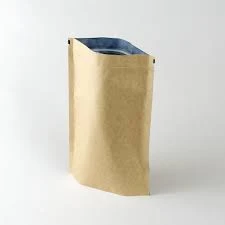- Afrikaans
- Albanian
- Amharic
- Arabic
- Armenian
- Azerbaijani
- Basque
- Belarusian
- Bengali
- Bosnian
- Bulgarian
- Catalan
- Cebuano
- chinese_simplified
- chinese_traditional
- Corsican
- Croatian
- Czech
- Danish
- Dutch
- English
- Esperanto
- Estonian
- Finnish
- French
- Frisian
- Galician
- Georgian
- German
- Greek
- Gujarati
- haitian_creole
- hausa
- hawaiian
- Hebrew
- Hindi
- Miao
- Hungarian
- Icelandic
- igbo
- Indonesian
- irish
- Italian
- Japanese
- Javanese
- Kannada
- kazakh
- Khmer
- Rwandese
- Korean
- Kurdish
- Kyrgyz
- Lao
- Latin
- Latvian
- Lithuanian
- Luxembourgish
- Macedonian
- Malgashi
- Malay
- Malayalam
- Maltese
- Maori
- Marathi
- Mongolian
- Myanmar
- Nepali
- Norwegian
- Norwegian
- Occitan
- Pashto
- Persian
- Polish
- Portuguese
- Punjabi
- Romanian
- Russian
- Samoan
- scottish-gaelic
- Serbian
- Sesotho
- Shona
- Sindhi
- Sinhala
- Slovak
- Slovenian
- Somali
- Spanish
- Sundanese
- Swahili
- Swedish
- Tagalog
- Tajik
- Tamil
- Tatar
- Telugu
- Thai
- Turkish
- Turkmen
- Ukrainian
- Urdu
- Uighur
- Uzbek
- Vietnamese
- Welsh
- Bantu
- Yiddish
- Yoruba
- Zulu
example of secondary packaging
Examples of Secondary Packaging
In the world of manufacturing and consumer goods, packaging plays a critical role in ensuring products reach consumers in perfect condition while also enhancing brand visibility and appeal. Secondary packaging, in particular, is crucial as it serves several functions that directly impact the product’s journey from the production line to the retail shelf. This article explores various examples and aspects of secondary packaging, revealing its significance in various industries.
Secondary packaging refers to the layer of packaging that contains one or more primary packages. Its primary purpose is to provide additional protection to the product and facilitate handling and transportation. Unlike primary packaging, which is in direct contact with the product, secondary packaging is usually not designed to interact with consumers directly. However, it plays several vital roles that are essential for both manufacturers and consumers.
One common example of secondary packaging is the cardboard box used for shipping consumer goods. Manufacturers often bundle individual products—such as bottles, jars, or containers—inside a larger box for easy handling and transportation. This secondary packaging not only provides an extra layer of protection against environmental factors like moisture and temperature fluctuations but also helps prevent damage during transit. Cardboard boxes are lightweight yet sturdy, making them an ideal choice for shipping products in bulk.
Examples of Secondary Packaging
In the cosmetic and pharmaceutical industries, secondary packaging often takes more elaborate forms. For instance, products like perfumes or medications are usually packaged in decorative boxes that provide not only protection but also an elegant presentation. These boxes are often designed with intricate graphics and embossing to create a premium feel, positively influencing consumer perceptions and encouraging purchase decisions. The secondary packaging can also contain crucial information such as usage instructions, ingredients, or disclaimers that are not feasible to include on primary packaging alone.
example of secondary packaging

Food products frequently utilize secondary packaging to ensure freshness and safety. For example, individual snack packs may be placed within larger tear-open cartons. This approach protects the food from contamination while also establishing portion control for consumers. Moreover, secondary packaging often incorporates designs that appeal to specific demographics, utilizing vibrant colors and engaging graphics that attract attention on supermarket shelves.
Another notable example is the use of display boxes for retail purposes. These boxes are designed to hold multiple units of a product and are often placed directly on the retail floor. They serve the dual purpose of facilitating inventory management and acting as eye-catching displays that can entice consumers to make spontaneous purchases. The design of these boxes is critical; they must be aesthetically pleasing while also structured to meet logistical needs, such as stackability and durability during transport.
In recent years, the emphasis on sustainability has also influenced secondary packaging designs. Many companies are now opting for eco-friendly materials such as recycled paper and biodegradable plastics. Brands that prioritize sustainable packaging often communicate this commitment to environmentally conscious consumers, enhancing their overall brand image.
As the dynamics of consumer demands and environmental considerations continue to evolve, secondary packaging will remain a dynamic component of product delivery strategies. Not only does it serve protective functions, but it also enhances customer experience and shapes brand identity. Understanding and innovating within the realm of secondary packaging can significantly influence a product's success in the marketplace.
In conclusion, secondary packaging is more than just a method of wrapping products; it is a critical aspect of logistics, marketing, and consumer safety. By investing in effective and attractive secondary packaging, companies can enhance their overall brand experience and meet the diverse needs of consumers.













